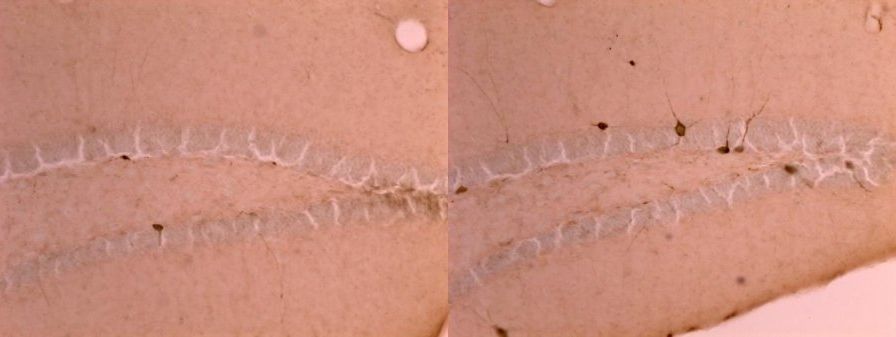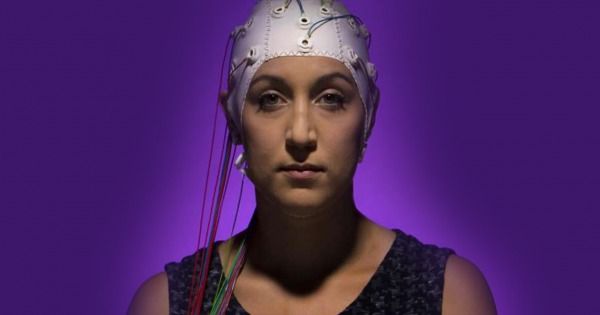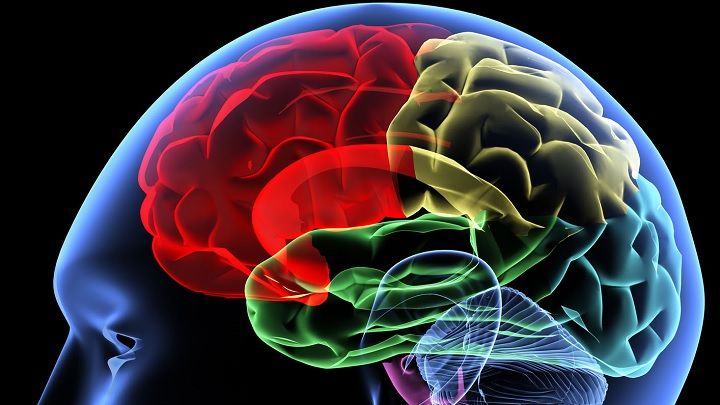Archive for the ‘neuroscience’ category: Page 847
May 10, 2016
Early life stress accelerates maturation of key brain region in male mice
Posted by Karen Hurst in category: neuroscience
Scientists studying how stress in early childhood affects the brain have new evidence from a study in male mice that a key region, the hippocampus, appears to mature faster.
May 10, 2016
Modeling, simulation help optimize chemotherapy to combat brain tumor
Posted by Karen Hurst in categories: biotech/medical, neuroscience
I would rather discovering something to permanently and is truly effective to replace Chemo.
Pharmacologic modeling and simulation has been used for the first time to translate promising laboratory results into a phase I clinical trial for pediatric brain tumor patients.
May 9, 2016
Doctors Unveil Potential New Tool to Fight Brain Cancer
Posted by Karen Hurst in categories: biotech/medical, neuroscience
Sounds promising for cancer patients.
Neurosurgeons may have found a way to get past the blood-brain barrier to better delivery chemotherapy to patients.
May 9, 2016
DARPA-backed researchers create dissolvable electrodes for brain monitoring
Posted by Karen Hurst in categories: bioengineering, biotech/medical, neuroscience
Next time you go for a brain scan; you could actually see dissolvable electrodes.
Hmmm
Scientists at the University of Pennsylvania in a study funded by the Defense Advance Research Projects Agency (DARPA) are developing implantable electrodes for brain monitoring that melt away at a predetermined rate. The devices could come in handy for monitoring and treating certain neurophysiological disorders such as Parkinson’s, depression and chronic pain.
Continue reading “DARPA-backed researchers create dissolvable electrodes for brain monitoring” »
May 9, 2016
Siri Creator Demos New AI That Doesn’t Suck This Time
Posted by Sean Brazell in categories: neuroscience, robotics/AI

At TechCrunch’s Disrupt NY, Siri creator Dag Kittlaus performed the first public demo of Siri’s new cousin, Viv. Kittlaus described the brains of Viv as, “software that’s writing itself,” which is a pretty bold statement with some implications that call to mind the dreariest of Skynet dystopias. But what exactly makes it any better than Siri?
The fact is we don’t yet know how good this new voice assistant will be, but we can reflect a little bit on what we see during the controlled demo in the video below. For starters, Viv is designed to integrate seamlessly with third party apps, which is a major deficit on Siri’s part. The new AI was able to send money via Venmo, book a room through Hotels.com, and hail a cab from Uber. And it did so quickly and with no apparent hassle. Kittlaus later in the presentation described Viv as a “marketplace” that he saw as an improvement upon app stores.
Continue reading “Siri Creator Demos New AI That Doesn’t Suck This Time” »
May 8, 2016
Scientists Can Now Identify Individuals Based on Brain Waves—And It’s 100% Accurate
Posted by Shailesh Prasad in category: neuroscience
Researchers discovered that people respond to stimuli differently enough that it is possible to create a unique signature, a brainprint, that could one day replace fingerprints in a number of instances.
For the longest time, the world has relied on fingerprints as a way to easily identify individuals. This is because a fingerprint is unique (and permanent) for each person—so what happens when someone’s fingerprint is stolen? This may sound a little farfetched, but it is easy enough to take a fingerprint from another, you just need to swipe a glass that they held.
And of course, you can’t grow a new finger to replace the print. This means that, when it gets compromised, it’s compromised forever. But now, researchers from Binghamton University have found a more efficient way to identify people—using brain waves.
May 7, 2016
A breakthrough in science of memory: How a “Spotless Mind” could soon be Reality
Posted by Karen Hurst in categories: biotech/medical, neuroscience, science
We could see commercials for the “Spotless Mind” someday and in various releases. However, why stop there?
Recently, scientists did find the gene that ties serial and mass murders together as a cause for their evil deeds and CRISPR could someday eliminate these people from existing which is a great thing. However, what happens if folks in power believe everyone in Europe and the US cannot have any religious belief and/ or values in order (in their own belief) to keep everyone equal; so they use this technolgy to eradicate how people believe or view the world. Just imagine; like John Lennon’s “Imagine”.
Jim Carrey’s role as shy and morose Joel Barish in “Eternal Sunshine of the Spotless Mind” is deeply memorable in the context of his predominantly comedic repertoire of movie roles. And context is everything when it comes to recollection of memories. Though the kind of memory erasing technologies showcased in Eternal Sunshine may be too farfetched to ever become reality, scientists have nonetheless managed to make astounding progress in understanding and manipulating memories.
May 6, 2016
How Google, Facebook employees get a brain boost
Posted by Karen Hurst in category: neuroscience
A new mode of operation for others to follow?
Mindfulness and meditation help Google, Facebook and others’ employees do their best work, says Happify CEO Tomer Ben-Kiki.
May 6, 2016
Air Force wants swarms of small ‘kamikaze’ drones to defeat missiles
Posted by Karen Hurst in categories: drones, economics, military, neuroscience, surveillance
Nice; let’s hope they hit the right target.
“I need a stealth bomber that’s going to get close, and then it’s going to drop a whole bunch of smalls – some are decoys, some are jammers, some are [intelligence, surveillance, and reconnaissance] looking for where the SAMs are. Some of them are kamikaze airplanes that are going to kamikaze into those SAMs, and they’re cheap. You have maybe 100 or 1,000 surface-to-air missiles, but we’re going to hit you with 10,000 smalls, not 10,000 MQ-9s. That’s why we want smalls.”
SAMs stands for “Surface-to-Air Missile,” and they’re one of the reasons that the Air Force has invested so much in stealth technology over the years: if a missile can’t see a plane, it can’t hit it. The problem is that the economics don’t quite work that way: it’s easier to make a new, better missile than it is to make an existing airplane even stealthier, and modern Air Force fighters serve for around 30 years each—longer if they’re bombers. Missiles are generally cheaper than airplanes, so anyone who wants to protect against aerial attack just needs to invest in a lot of missiles.
Continue reading “Air Force wants swarms of small ‘kamikaze’ drones to defeat missiles” »

















